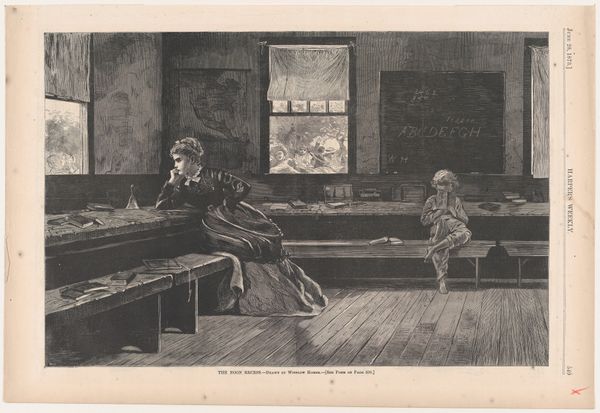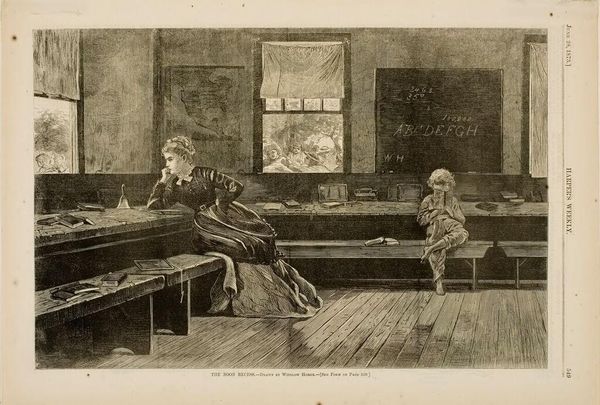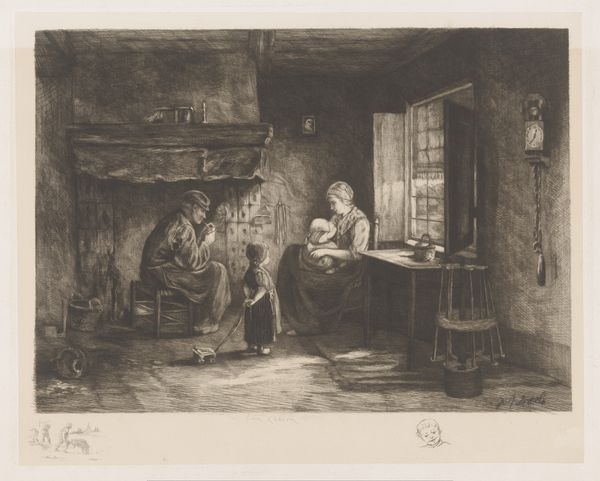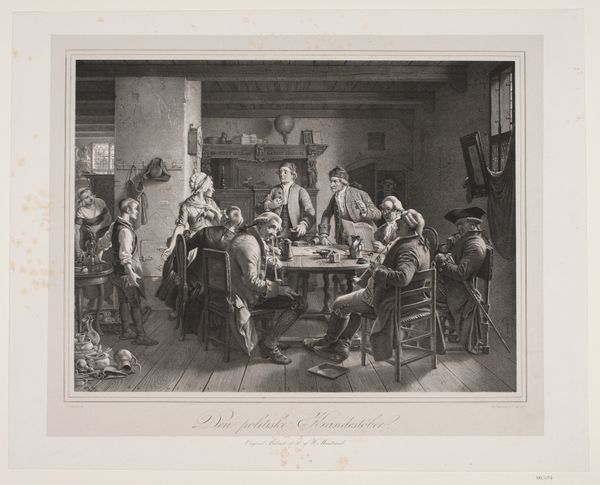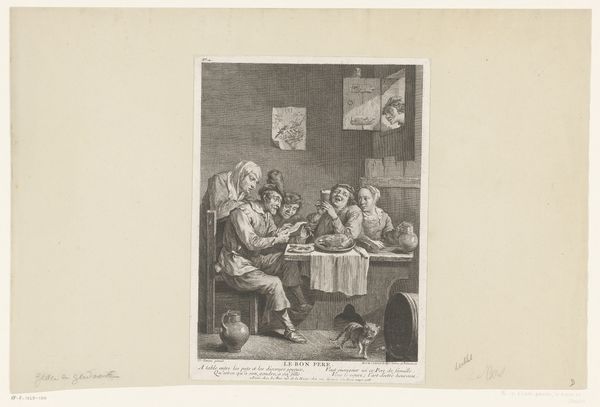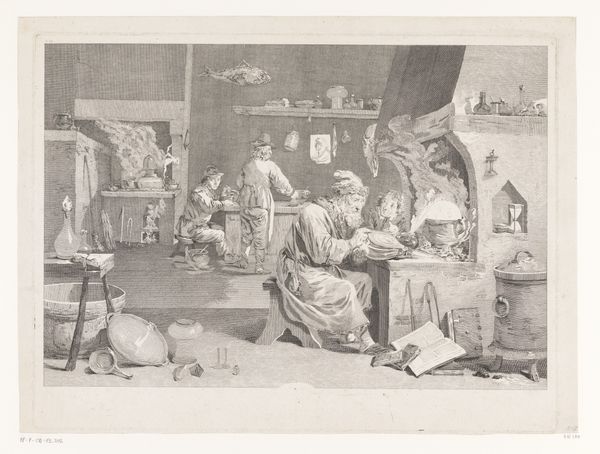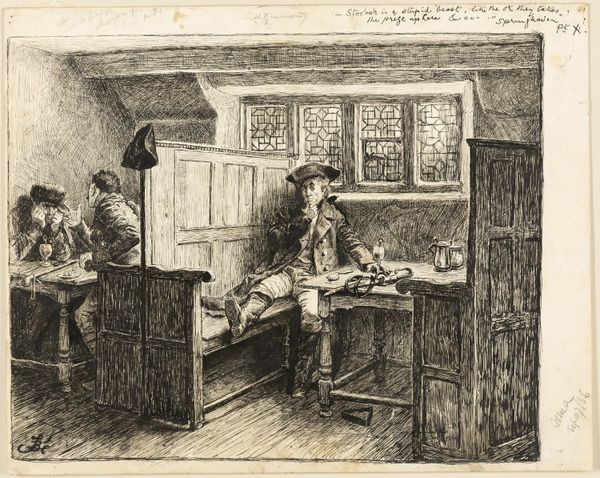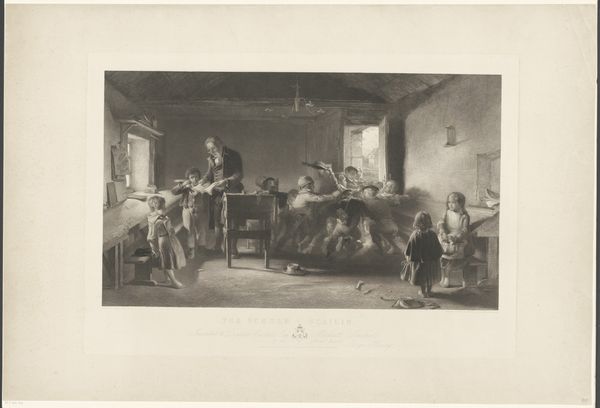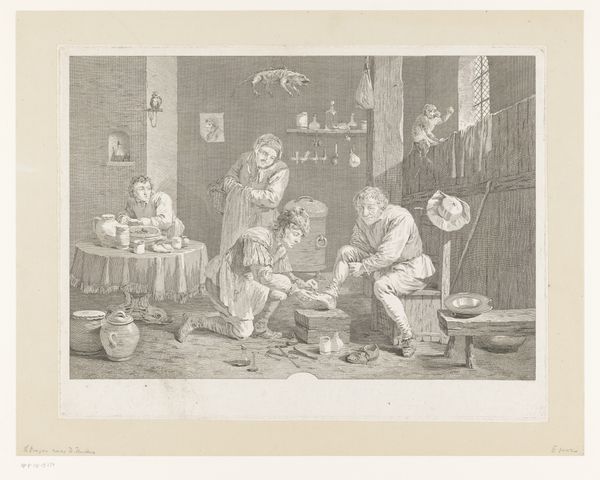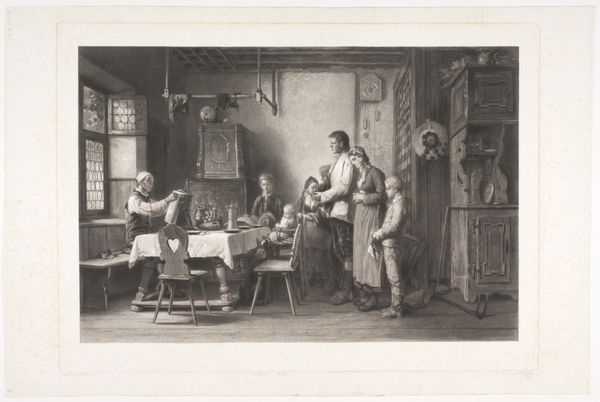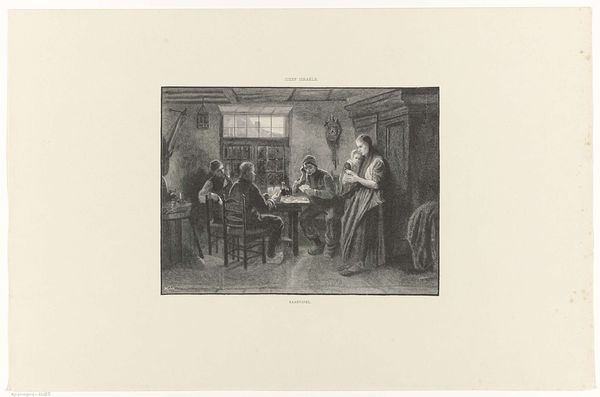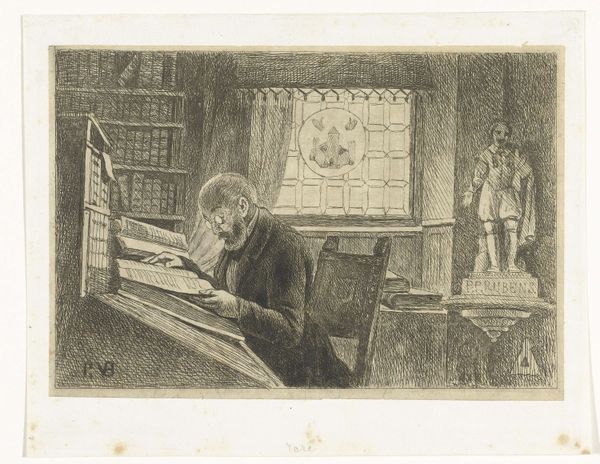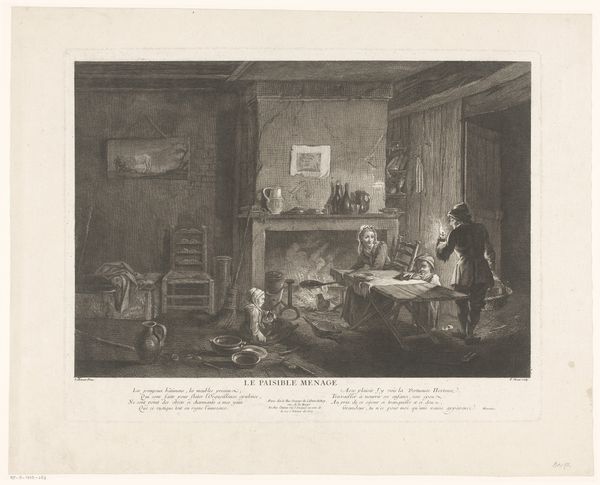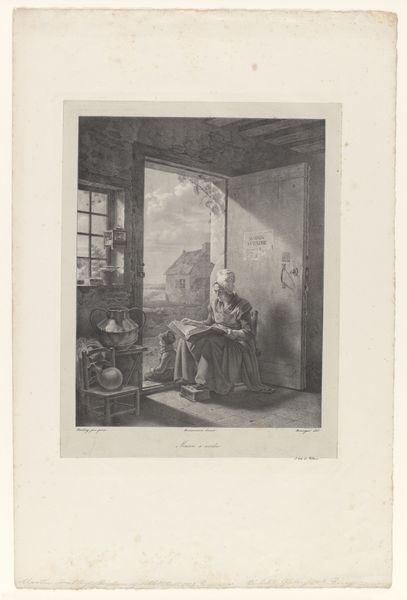
drawing, print, woodcut, pen, wood-engraving, engraving
#
drawing
#
narrative-art
# print
#
woodcut
#
19th century
#
united-states
#
pen
#
genre-painting
#
academic-art
#
wood-engraving
#
engraving
Dimensions: 9 1/16 x 13 3/4 in. (23.0 x 34.9 cm)
Copyright: Public Domain
Editor: So, this is Winslow Homer's "The Noon Recess," a wood engraving from 1873. There’s such a stark contrast between the poised teacher and the more informally dressed child, and the body language of each creates a feeling of isolation despite them being in the same room. How do you interpret this work, especially in the context of its time? Curator: Well, considering Homer’s career began during the Civil War, and that this work was created shortly after, it’s impossible to ignore the political and social atmosphere of Reconstruction. Look at the classroom setting. Education was increasingly seen as crucial for newly freed African Americans, yet resources and opportunities remained vastly unequal. Who do you think this engraving was created for? Editor: I imagine it was intended for a largely white, middle-class audience, given its publication in Harper's Weekly. Curator: Exactly. Homer is depicting a scene that might appear idyllic on the surface – a school, children learning. However, we need to interrogate this image critically. Is Homer challenging his viewers to think about the complexities of education and social mobility in a society still grappling with racial injustice? Note the teacher's melancholic gaze, and what seems to be a white student alone. Does this isolation represent the difficult social integration and the weight of societal expectations being imposed? Editor: It’s a bit unsettling to think about this image being consumed by an audience perhaps blind to these underlying issues. The teacher does appear rather contemplative. Curator: Right, we must consider whose perspectives were prioritized, and who was often silenced or rendered invisible in these visual narratives. Editor: This makes me consider how different communities interpret historical works such as this. Thank you, this deeper context changed how I see Homer's work. Curator: Indeed. Recognizing these historical tensions invites essential dialogues on how art reflects and shapes cultural understanding.
Comments
No comments
Be the first to comment and join the conversation on the ultimate creative platform.
